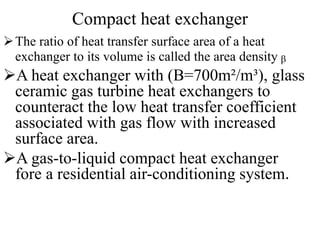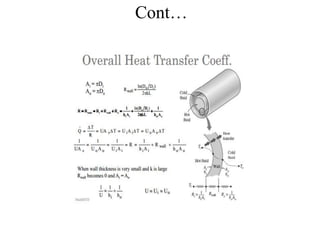This document provides an outline for a course on thermal unit operations. It begins with definitions of unit operations and thermal unit operations. The three main mechanisms of heat transfer are then described: conduction, convection, and radiation. Conduction involves heat transfer through direct molecular contact in solids or stationary fluids. Convection uses fluid motion to transfer heat. Radiation transfers heat via electromagnetic waves without a medium. Equations for calculating heat transfer via these different mechanisms are also provided.
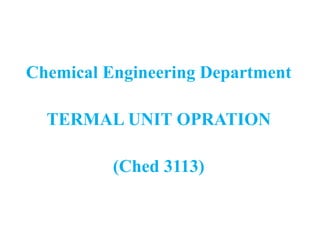

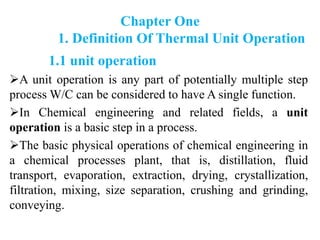
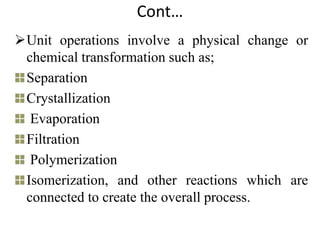
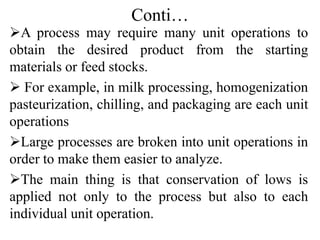
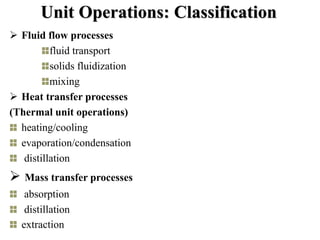


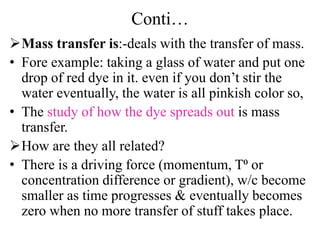

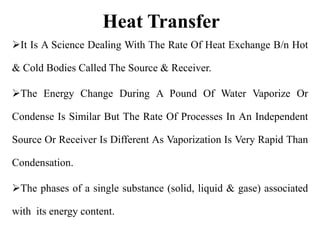
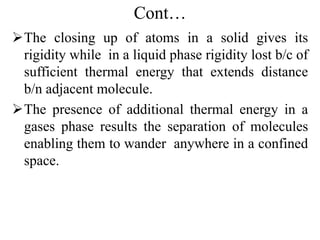


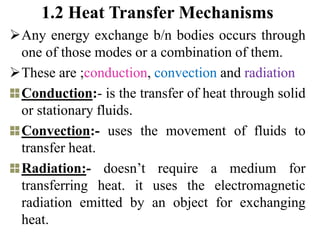


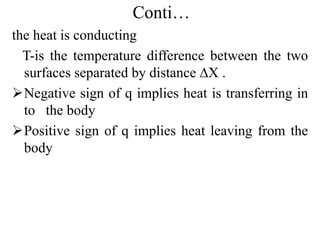




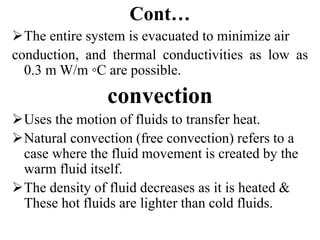

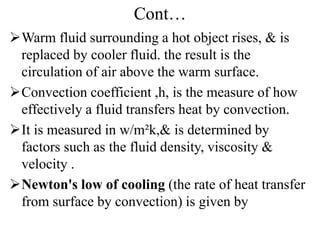
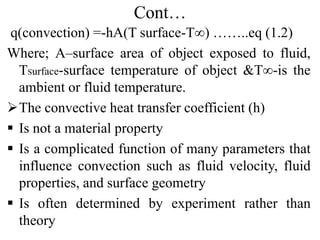


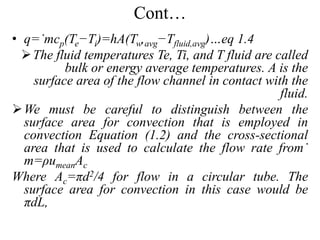


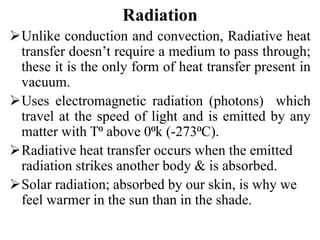



![Radiation in an Enclosure
A simple radiation problem is encountered when
we have a heat-transfer surface at temperature T1
completely enclosed by a much larger surface
maintained at T2.
the net radiant exchange in this case can be
calculated with
q= Ɛ1σA1(T4
1−T4
2)………..eq [1.8]
values of Ɛ will be given.](https://image.slidesharecdn.com/thermalunitoperationppt1-230102073306-93620f24/85/Thermal-Unit-Operation-PPT1-pptx-36-320.jpg)


